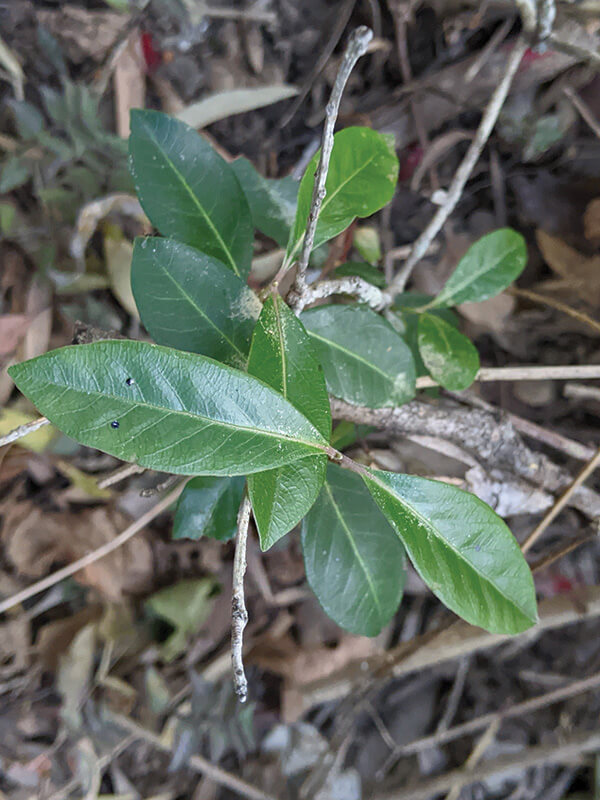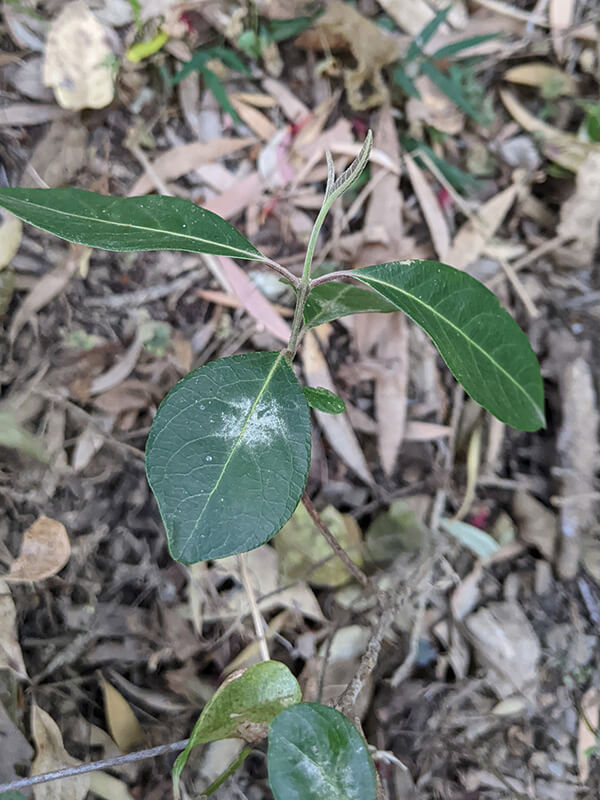Native Guava (Rhodomyrtus psidioides) was once common in SEQ just 11 years ago, but it is likely to go extinct in the near future. The reason for its quick decline is the result of an invasive fungus known as Myrtle Rust (Austropuccinia psidii), which was first detected in Australia in 2010. The Native Guava was once found throughout subtropical rainforests along the east coast of Australia from Gympie to Newcastle, but Myrtle Rust has been so devastating that almost all mature plants have been wiped out. For this reason, the conservation status of Native Guava was lifted to Critically Endangered under State and Commonwealth legislation.


Myrtle Rust produces millions of wind-blown spores, so it is easily spread. The leaves, stems, fruit and flowers of Native Guava are affected by Myrtle Rust, impacting its ability to reproduce. The Native Guava is so susceptible that all its foliage dies back, leading to its death. Plants may sucker from root stock; however, these new suckers are usually quickly infected with Myrtle Rust.
On some Logan Land for Wildlife properties, we’ve recently found a few Native Guava root suckers that have grown from a previously unrecorded plant. Some of these suckers are up to 4m tall with no rust. Finding these populations is important so that they can be monitored and treated if the Myrtle Rust does appear.
Native Guava was also recently found on a Land for Wildlife property at Cedarton where the celebration event for the 5000th LfWSEQ property took place. Unfortunately, the growing tips of these plants were affected by Myrtle Rust.
The University of Queensland has been researching the impacts of Myrtle Rust on Native Guava and other native plant species, and they found that the application of systemic fungicide as a foliar spray has been effective. Of the ones trialled, Bayfidan 250 EC fungicide at a concentration of 0.5mL/L of water has been the most effective, providing resistance to Myrtle Rust for about one year.
If you have patches of rainforest on your property, particularly along creek lines, please keep a look out for Native Guava and let us know if you think you’ve found one. Or, if you’re already aware of them on your property and they’re affected by Myrtle Rust, try treating it with a fungicide and keep your local Land for Wildlife Officer up to date on its progress. This information is useful to the researchers who are trying to help save the species.
Image Top: Growing tips of Native Guava dying back due to Myrtle Rust.
Article by Nick Swanson
Land for Wildlife Officer
Logan City Council

Hi there, I have had a plant recently come up in our coastal backyard of Hervey Bay.
I thought nothing of it and mowed it down several times, I finally thought that I would let it grow and now is a small bush. From researching pictures on the internet I believe it is the Native Guava and is covered in fruit at the moment.
Please let me know if you require any photos to confirm this.
Regards
R Edwards
Hi Roland. You may wish to upload your photos to the Qld Native Plant Identification Facebook page for identification.
https://www.facebook.com/p/Queensland-Native-Plant-Identification-100066463007528/
If it is Native Guava, you may wish to contact the local native plant nursery and see if they want some seed.
https://www.frasercoast.qld.gov.au/fraser-coast-community-nursery